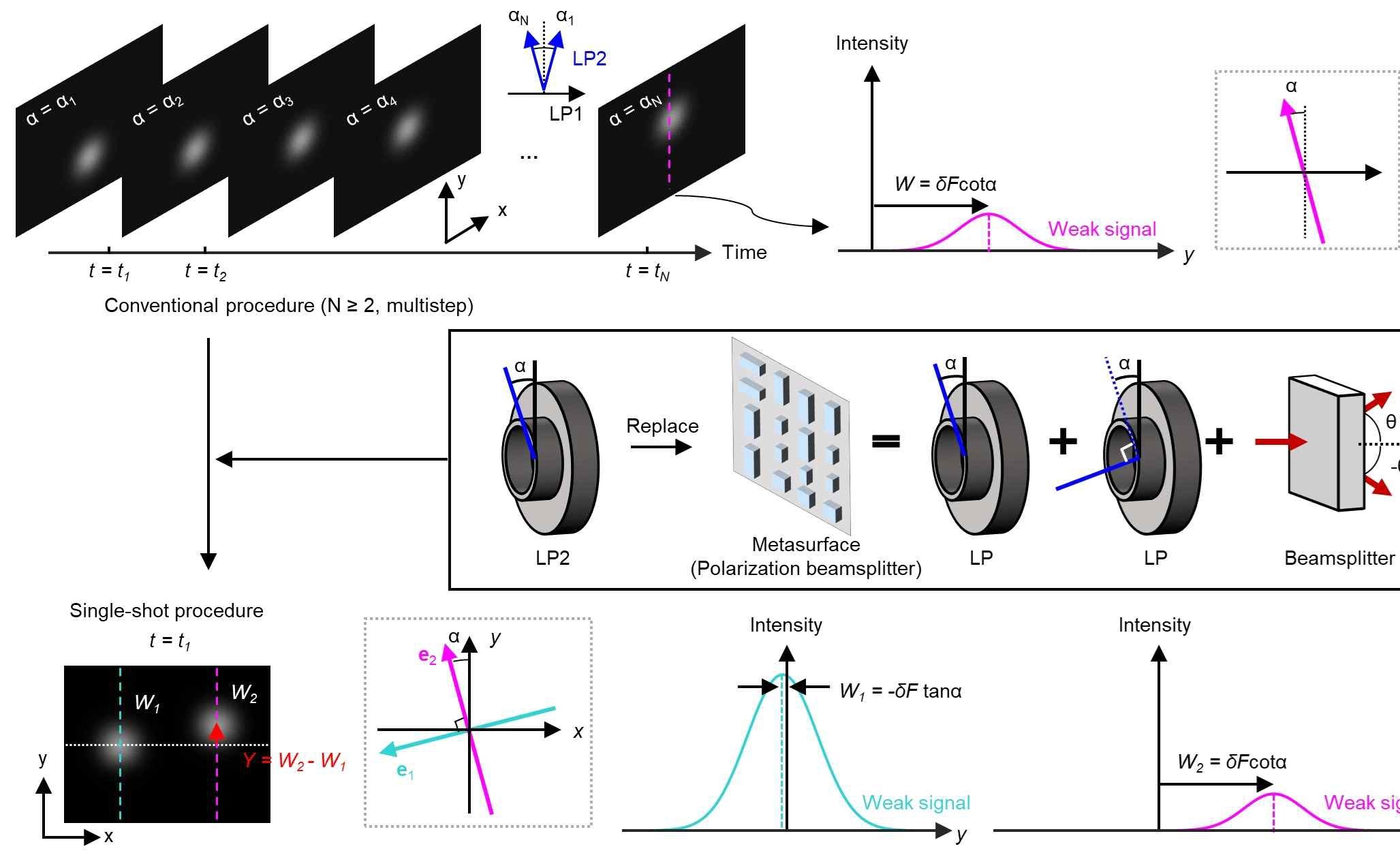2025.03.25
- GIST School of Mechanical and Robotics Engineering Professor Minkyung Kim's research team, Yonsei University and POSTECH joint research team develop a technique to measure the optical spin Hall effect with a single image using a metasurface
- Real-time changes in the surface of an object can be measured in seconds, so it is expected to be used in various fields that require ultra-high sensitivity detection, such as chemistry, biology, and medicine
Published in the international academic journal 《Nature Communications》
The Gwangju Institute of Science and Technology (GIST, President Kichul Lim) announced that Professor Minkyung Kim's team from the School of Mechanical and Robotics Engineering, along with Professor Dasol Lee from Yonsei University and Professor Junsuk Rho from Pohang University of Science and Technology (POSTECH) have developed an innovative technology to precisely measure the optical spin Hall effect in real time with a single image using metasurfaces.
This research is expected to be widely used in fields where high precision and immediate detection are required and changes in the surface of an object must be detected in microseconds.
The optical spin Hall effect is a phenomenon in which the center position moves minutely when light is reflected from the surface of an object or changes direction. This is a core principle of ultra-small optical elements and precision measurement technology, and can be used in various optical devices such as beam splitters and filters.
In the existing measurement method, the light reflected from the surface of an object is passed through a polarizing plate* and then an image of the light is obtained with a camera. At this time, the angle of the polarizing plate must be rotated to take multiple images and combine them in order to measure the optical spin Hall effect.
This method has the advantage of being able to implement high precision, but it has limitations in precise measurement of surfaces that change in real time, so it has been difficult to use in fields that require it.
The research team devised an innovative method that can measure the optical spin Hall effect with just one image capture, taking advantage of the fact that the metasurface can simultaneously implement the effects of two polarizers. The metasurface is an array of artificial structures of nanometer size that can precisely control the polarization and direction of light.
This technology is designed to separate two lights with different polarizations through the metasurface and have them arrive at different locations on the camera simultaneously. Through this, the relative position difference between the two lights was analyzed, and the optical spin Hall effect was precisely measured.
The research team proved that the optical spin Hall effect can be measured with just one image by experimenting with light reflected from a prism. It is a dramatic increase in measurement efficiency while maintaining the same precision as the existing method.
In addition, by rotating the metasurface, the measurement sensitivity of the optical spin Hall effect was adjusted, and in an experiment where the optical spin Hall effect was artificially created so that it could change over time, the change in the optical spin Hall effect was successfully observed in real time in units of seconds.

Schematic diagram and results of the optical spin Hall measurement method. (Left) Schematic diagram of the optical spin Hall measurement using the metasurface, (Right) Comparison of the results using the proposed measurement method and the existing measurement method.
Professor Minkyung Kim said, “The existing method required multiple measurement procedures and could not be used in real time, but through this study, it has become possible to precisely analyze the optical spin Hall effect with just one measurement. This technology is expected to be widely used in various fields such as chemistry, biology, and medicine that require real-time, ultra-high-sensitivity detection.”
This study was jointly supervised by Professor Minkyung Kim of GIST, Professor Dasol Lee of Yonsei University, and Professor Junsuk Rho of POSTECH, and conducted by Ph.D. student Jinkyeong Lee of GIST, combined master’s and doctoral student Jaekyung Kim of POSTECH, and combined master’s and doctoral student Sangmin Shim of Yonsei University. The results of this study, which was supported by the Sejong Science Fellowship, Basic Research Laboratory, and Mid-career Researcher Program of the Ministry of Science and ICT and the National Research Foundation of Korea, were published online in the international academic journal 《Nature Communications》 on March 19, 2025.
* polarizer: Polarization is one of the properties of light, and corresponds to the vibration direction of the electric field that constitutes light, and a polarizer is a component that selectively passes only specific polarization.
* The same precision as the existing method of measuring by rotating a total of 11 times at 0.5° intervals from -2.5° to 2.5° was obtained with just one measurement.





